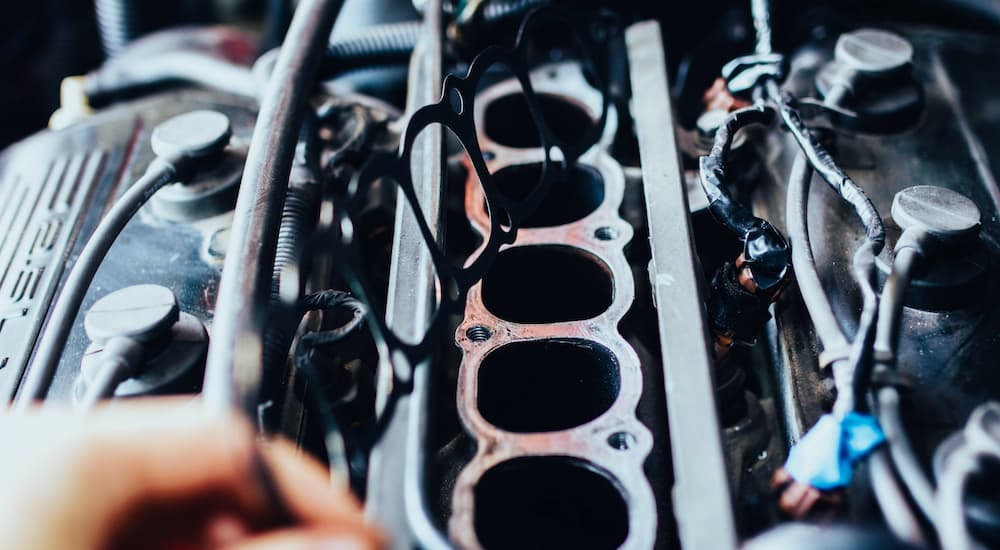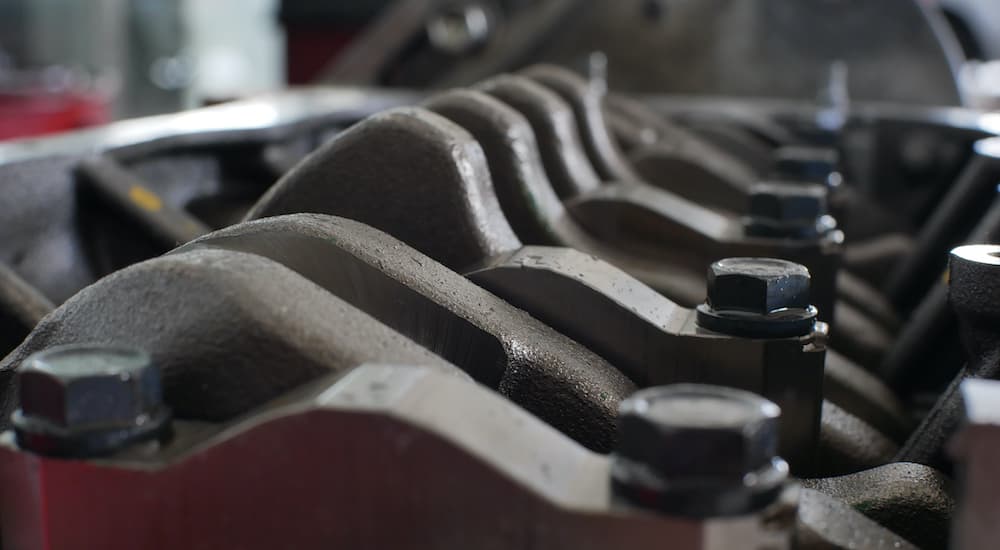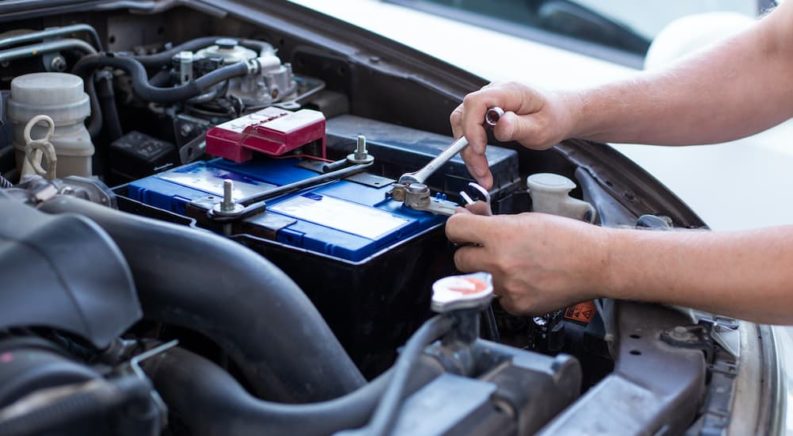If you have ever done any car work or seen a set of installation schematics, you’ve probably seen some strange abbreviations in the instructions. Some you probably find very useful, but some may seem irrelevant or confusing. While you may be tempted to write off torque specs as unnecessary, ignoring them can result in anything from annoying rattles to broken parts.
Before we dive into the arcane world of torque values, why they are important, and how to measure them, let’s take a look at some of the terms you need to know.
- Newton-Meter (N-m): This is a metric unit of measure which is derived from one newton of pressure applied to a one-meter long lever.
- Pound-Foot (lb-ft): An imperial unit of measure that is calculated from one pound of pressure at a distance of one foot from the pivot point.
- Inch-Pound (in-lb): An imperial measurement determined by applying one pound of tension on a one-inch long lever.
Depending on the origination of schematics or procedures, you may see a couple of these measures or sometimes just one. There are many conversion charts and calculators available to figure out the equivalents if the instructions use different units of measure than your current tools.

Fastener Features and Considerations
Almost all bolts in a vehicle have a tolerance range for how tight they should actually be, and there are a lot of factors that come into play when determining this. Some of these things have a much bigger bearing than others, but all of them are taken into consideration during the engineering process.
- Length and Thickness – Although it is pretty self-explanatory that heavier hardware can take more force, it is also important to note that a fastener that is twice as thick has more than double the strength.
- Thread Pitch – One often overlooked item is the thread pitch. If you have two bolts of the same size, the bolt with the fine pitch (shallower thread angle) will be stronger than the one with the coarse pitch.
- Material – What the bolt is made of and what it is being threaded into makes a big difference in how much force it can sustain. There are a variety of fasteners made from things like plastic, aluminum, brass, bronze, nickel, steel, stainless steel, and titanium. Some are even alloys of multiple metals, providing a new set of properties and rigidity.
- Fastener Head – The head of a bolt also is an important part of the maximum torque of an item. There are a wide variety of head types from hex, Allen, Torx, square, Phillips, and slotted. Generally, external drive fasteners such as hex bolts have more surface area and structural rigidity than internal drive fasteners such as slotted screws.
- Treatment – There are many different types of treatment a fastener can go through to help with anything from corrosion resistance to strength. Heat treatment is a very common way to harden bolts and increase rigidity.
- Gasket or Washer – If a gasket, washer, or crush washer is being used in the application, this can play a large role in how tight things should be. Gaskets under too much tension tend to deform, and if it’s being used to seal something, it might not be reusable in the future or even fail entirely.
- Lubrication – If the bolt has been coated with oil, anti-seize, thread locker, or any other substance, it can affect the torque value.
Many automotive bolts are graded. There are three major grading agencies that are used, and they are usually stamped on the bolt head. There are SAE (Society of Automotive Engineers), Metric / ISO (International Standards Organization), and ASTM (American Society for Testing and Materials). The name of the fastener manufacturer may also be stamped on the head. The higher the grading or class of the bolt, the stronger and more expensive the bolt usually is.
Less Strength On Purpose?
Some fasteners are actually engineered to be “over-tightened.” TTY or “torque to yield” bolts are made to provide superior and reliable clamping force. They do this by yielding or stretching once pushed past a specific torque setting. A very common use for these bolts is to clamp down an aluminum head to the block with an MLS (Multi-Layered Steel) head gasket. As head gasket failure will eventually cause complete engine failure, you can see why this would be incredibly important.
Improper Torque
A common torque spec in the car community is the “ugga dugga.” This is generally used as a joke identifying that someone will assemble the equipment without any real measure of force. “How many ugga duggas does this lug nut take?”. With the use of impact tools, this can be a very risky thing to do as power tools can quickly apply more force than a hand tool without much feedback to gauge relative tightness.
What happens when proper torque specs are not followed? It’s pretty simple; either the bolt is too loose or too tight, and each scenario comes with its own set of problems. If it’s too loose, a bolt can “back out” partially or even completely. This is especially true of bolts that see a lot of dynamic tension, vibration, or load. Depending on what the loose bolt is holding, this can cause anything from annoying noises to catastrophic failure. However, if you tighten a bolt too much, you can damage the head, the threads, or even shear a bolt in half. Bolts that are too tight can also be almost impossible to remove without doing more damage.

Get It In Spec
Now that we have the what and why, let’s talk about how. There are a few methods to getting bolts torqued to spec. One of the most popular ways to do this is with a tool called a torque wrench. Mechanical torque wrenches are driven by a spring and make an audible clicking noise once the torque spec is reached. Digital torque wrenches will light up or beep once you are on target. There are also digital adaptors that can be used to turn any wrench of your choosing into a torque wrench.
Sometimes torque wrenches aren’t the best way to achieve perfect results. There are a lot of circumstances and variations that can cause unreliable numbers – particularly when using any lubricant like thread locker, anti-seize, or penetrating oil. Thread contamination from debris, dirt, and rust is also a potential source of trouble and should always be cleaned with a wire brush to avoid issues.
One reliable solution to get something in spec even if the threads are lubricated or contaminated is to use the torque and angle technique. You first get the item to a specified initial torque value and then turn it to a specific number of degrees to reach the desired final torque value. Spark plug manufacturers often specify this technique as aluminum threads are very weak and easy to strip. By using the torque and angle technique, they reduce the potential for needing a very expensive repair.
Get Equipped
Some seasoned mechanics might be able to get in the ballpark of correct torque specs without the right tools after years of practice, but do you want to trust safety to guesswork? If you plan on doing automotive work, even if it’s infrequently, a reliable torque wrench is an absolute must. Just make sure you treat it as the specialized tool that it is. Both digital and analog wrenches are sensitive measuring instruments. Extensive use or even a hard drop can throw off their readings, so make sure you follow the manufactures care procedures for calibration intervals. Now go make sure those bolts are torqued to spec!

